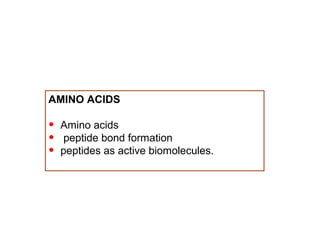The document discusses amino acids, which are the basic building blocks of proteins and peptides. It describes the common amino acids found in proteins, including their structures and properties. Key points covered include the formation of peptide bonds between amino acids, the properties of different amino acid side chains, and several small peptides and polypeptides that serve important biological functions. The goal is to educate on the fundamentals of amino acid and protein chemistry.





















































































































































